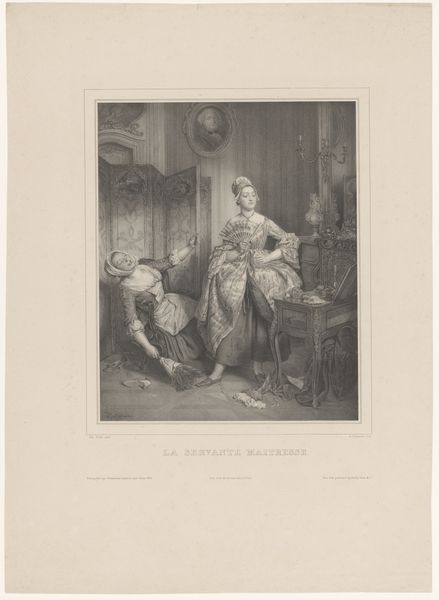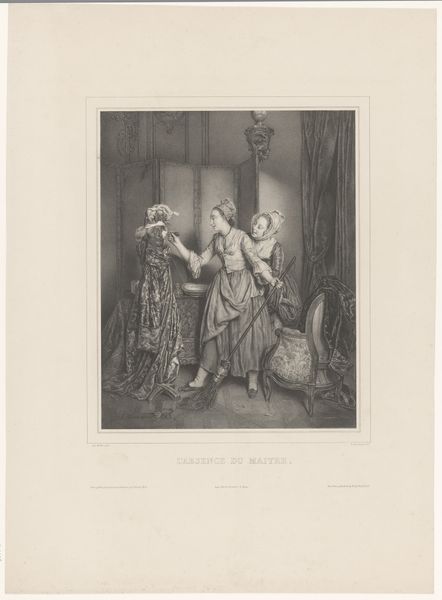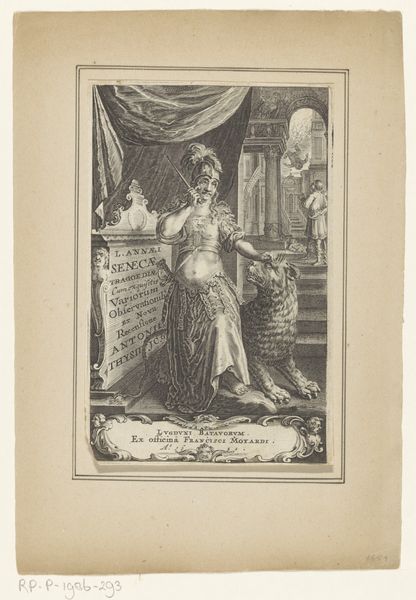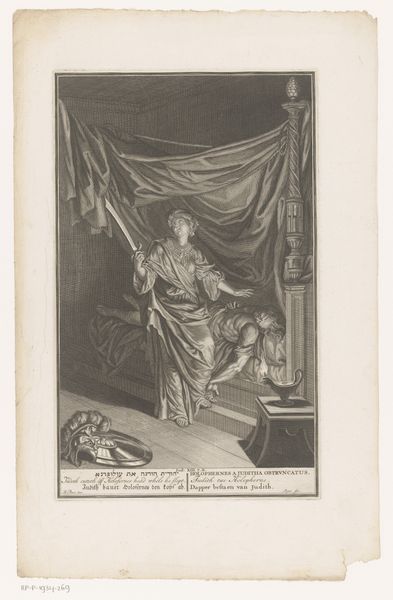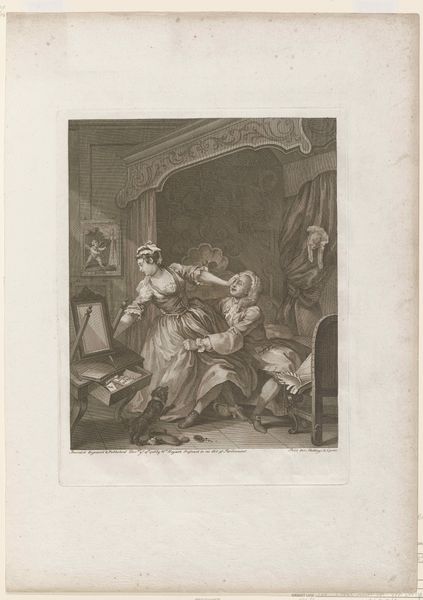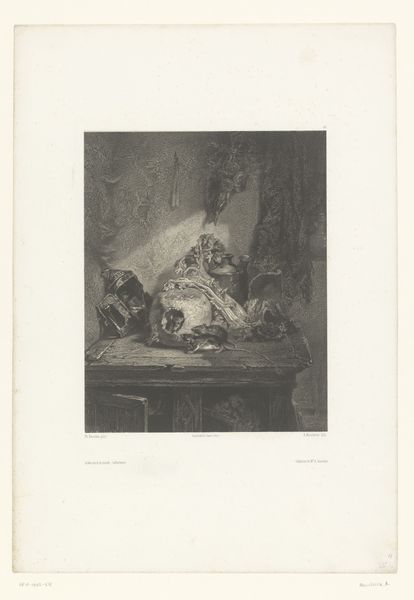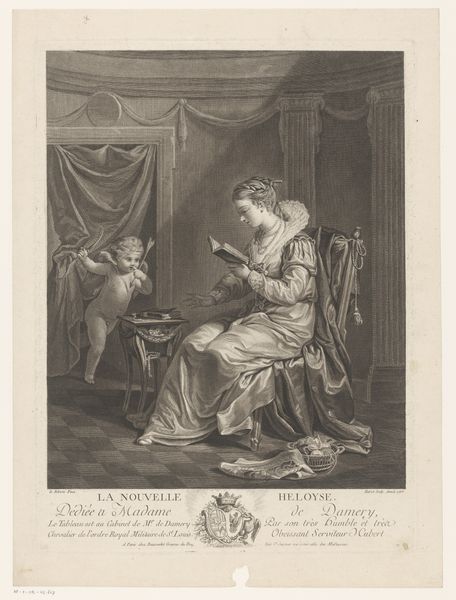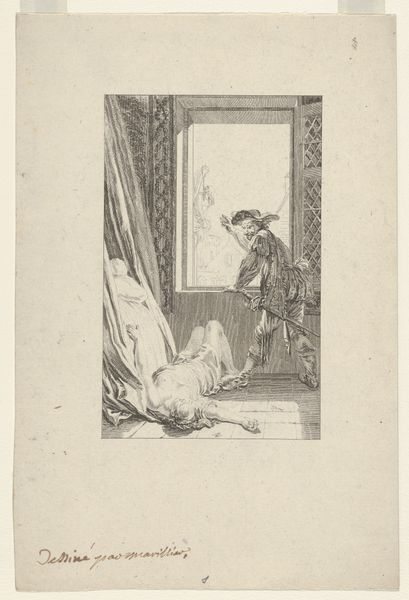
print, engraving
#
neoclacissism
# print
#
genre-painting
#
history-painting
#
academic-art
#
engraving
Dimensions: height 547 mm, width 423 mm
Copyright: Rijks Museum: Open Domain
Editor: So this print, "Maria I Stuart musicerend met edelman" by Jean Louis Charles Pauquet, made sometime between 1769 and 1824, it gives off a sense of wistful nostalgia, almost like looking at a play frozen in time. What story do you think this image is trying to tell? Curator: Indeed, a performance. This image, with its academic style rooted in Neoclassicism, speaks volumes about cultural memory and the enduring power of symbols. Do you notice the subtle details, like the sword, the musical instruments, and the heavy drapery? These elements aren't merely decorative; they are laden with symbolic meaning. Consider Mary Stuart herself, often portrayed as both queen and martyr. How does her depiction here—at leisure, engaged in music—intersect with her historical persona? Editor: Well, seeing her with the music kind of softens her image, making her more human than the tragic queen I usually read about. So, are the musical instruments like, symbols of her emotional life or something? Curator: Precisely! Music often serves as a metaphor for harmony, but also for transient beauty, and, perhaps, regret. This wasn't a snapshot. How does the setting affect our interpretation of her state of mind? What might be read in the man who accompanies her performance, as he too plucks an instrument? Their combined sound, what might that elicit? Editor: It adds a layer of intimacy, but the setting is clearly aristocratic, so is it perhaps about portraying royalty in a way common people can understand, too? Curator: Precisely. In the end, this engraving shows how potent and complex meanings continue through symbols, and across time. Editor: That makes a lot of sense. Thanks for clarifying the image, and its place in both history, and cultural memory!
Comments
No comments
Be the first to comment and join the conversation on the ultimate creative platform.
